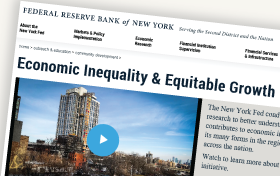Highlights from the Fourth Bi‑annual Global Research Forum on International Macroeconomics and Finance

Achieving and maintaining global financial stability has been at the forefront of policy discussions in the decade after the eruption of the global financial crisis. With the purpose of exploring key issues in international finance and macroeconomics from the perspective of what has changed ten years after the crisis, the fourth bi-annual Global Research Forum on International Macroeconomics and Finance, organized by the European Central Bank (ECB), the Federal Reserve Board, and the Federal Reserve Bank of New York, was held at the ECB in Frankfurt am Main on November 29-30, 2018. Participants included a diverse group from academia, international policy institutions, national central banks, and financial markets. Among the topics of discussion: the international roles of the U.S. dollar, the evolution of global financial markets, and the safety of the global financial system.














 RSS Feed
RSS Feed Follow Liberty Street Economics
Follow Liberty Street Economics